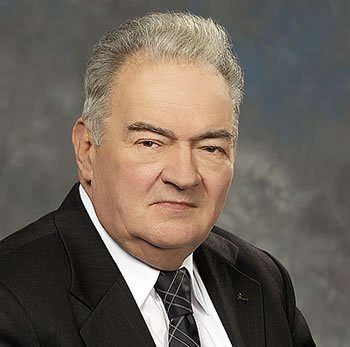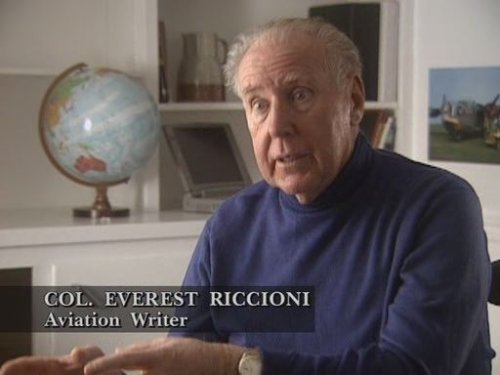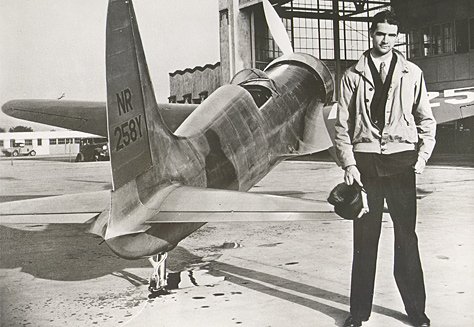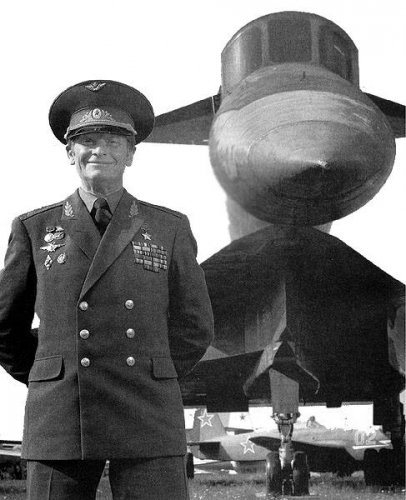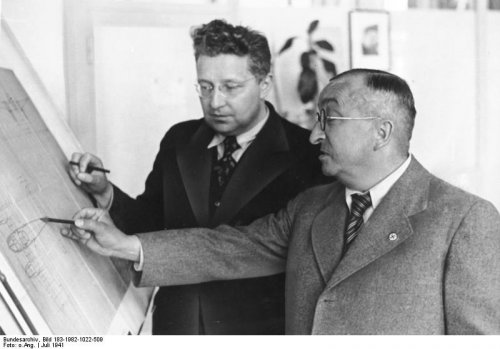The talented and inventive Schmued, by now, a citizen of the United States, was employed by North American Aviation (NAA) in Dundalk, Maryland. In 1935, North American was relocated to Los Angeles, California, from General Motors. When his wife Luisa proved reluctant to relocate from the east coast, Schmued joined Bellanca but his time there was short-lived. While travelling to California to work again for North American, the Schmueds' car was involved in a head-on collision on Route 60. His wife was tragically killed while Schmued was seriously injured. After recovery, he went to work for "Dutch" Kindelberger in early 1936 as a preliminary design engineer. Schmued was involved in the XB-21 (designing the front turret), creating the NA-50 single-engine fighter for Peru then going on to design work on the NA-62 (later the B-25 Mitchell). Schmued would later became Chief of Preliminary Design. [1]
During his long tenure at NAA, he contributed greatly to the design of many airplanes. By far his most famous design was the highly successful P-51 Mustang of World War II. The legend began with NAA's President, "Dutch" Kindelberger asking, "Ed, do we want to build P-40s here?" Schmued had been long awaiting a question like this. His answer would begin the design process, "Well, Dutch, don't let us build an obsolete airplane, let's build a new one. We can design and build a better one." [2] His adaptation of the then new laminar flow wing and other innovations made the P-51 performance outstanding in all respects and its flying qualifies superb. This aircraft was still winning races and setting speed records for piston engine-powered airplanes decades after its production had ended. Although he was renowed as a workaholic at North American, Schmued undertook the design of the Morrow Victory Trainer in 1941 on an independent contract; it was dubbed the "Mini-Mustang" because of its close resemblance to the P-51. [3]
An urban legend has grown up about Edgar Schmued, possibly related to his German origins, claiming he had once worked for Willy Messerschmitt and that the Mustang was heavily influenced by the Bf 109. Just as familiar is the notion that the abortive Curtiss XP-46 was the basis of the P-51 design.
Schmued was employed by North American Aviation, later a division of the Rockwell International Corporation, for 22 years. During his tenure, Schmued also designed the F-82 and, the other iconic NAA designs, the F-86 Sabre and F-100 Super Sabre. After leaving North American, he spent five years as an aircraft designer for the Northrop Corporation, where he helped design the F-5 and the T-38.
Edgar Schmued died at Oceanside, California, on 1 June 1985.

